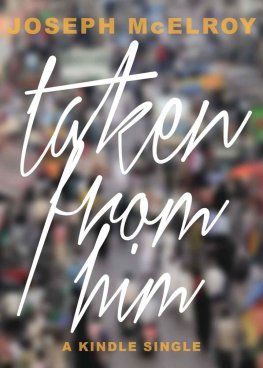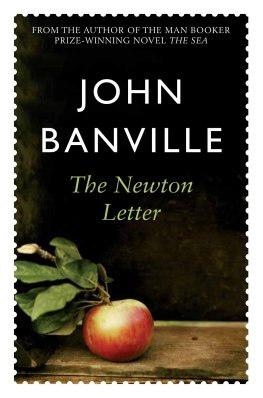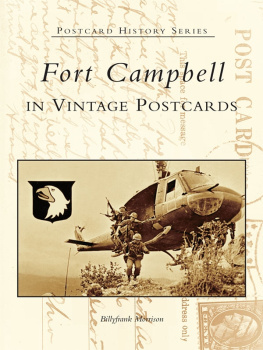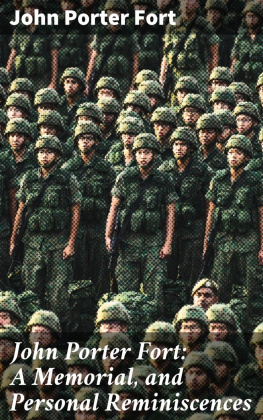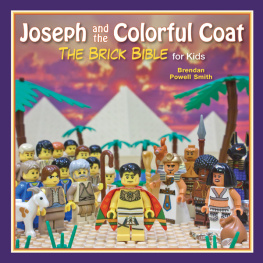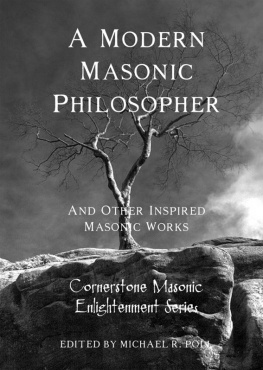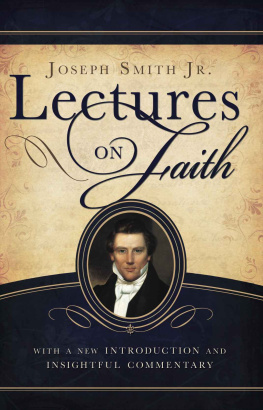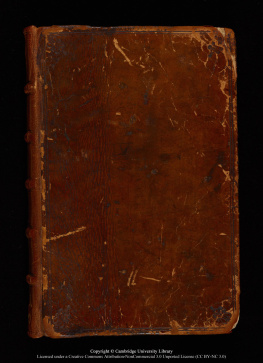Brothers And Builders
A Story And Study Of Masonry
Joseph Fort Newton, Litt. D.
Contents:
The Origin And History Of Freemasonry.
Brothers And Builders
The Anteroom
Part IProphecy
Chapter I - The Foundations
Chapter II - The Working Tools
Chapter III - The Drama Of Faith
Brothers And Builders, J. Fort Newton
Jazzybee Verlag Jrgen Beck
86450 Altenmnster, Loschberg 9
Germany
ISBN: 9783849631017
www.jazzybee-verlag.de
www.facebook.com/jazzybeeverlag
Frontcover: Argus - Fotolia.com
The Origin And History Of Freemasonry.
By Charles H. Vail
The majority of the uninitiated believe that everything connected with Masonry is to be kept a secret. This is an error, for there are many books written on Masonry which are open to the perusal of all, whether they be members of or strangers to the Order. I shall divulge no pledged secrets.
The Eminent Masonic Scholars, Messrs. Stillson and Hughan, in introducing the "History of Freemasonry and Concordant Orders," plainly state that, "Neither is the work necessarily for Freemasons alone; for not a few of the chapters furnish excellent and suggestive reading for those who would like to know somewhat of the Brotherhood either prior to joining its ranks, or because of this eligible opportunity to peruse a reliable account of so venerable and pre-eminently respectable an Organization."
Except for some portions of the Ceremony the signs and passwords which relate to the modes of recognition, there is nothing secret in Masonry.
There has been so much misunderstanding on this subject that perhaps it might be well to corroborate this statement. The same standard authority just cited says, "At the outset, therefore, it is well to point out that the Masonic fraternity is not, strictly speaking, a secret society, for it has neither secret aims nor constitutions. Everywhere its laws may be perused by 'friend and foe' alike, and its objects are exclusively those which are, and always have been, published to the world. It is private rather than secret; for, unless it be our esoteric customs, which relate, directly or indirectly, to our universal and special modes of recognition, we have no secrets."
Many absurd notions regarding Masonry have gained credence in the past, even among Masons themselves. We are pleased to see that modern Masonic writers are endeavoring to right these misconceptions. Formerly it was regarded as treason to speak to the profane the truth regarding the history of the Order. That certain exaggerated statements were made in the days when little was known of the history of the institution, gives no reason for a continuance of these errors.
There is no reason to-day for the pretensions that Freemasonry originated in the days of King Solomon, or with the Jewish Patriarchs, or that the fundamental doctrines of Masonry the unity of God and the Immortality of the soul were the exclusive possession of any one people or religion. Such claims were made before the science of comparative religions was so well known. For modern investigation of the world religions show us that these beliefs were world-wide, and held by all the great nations of antiquity before the Jewish nation was born, or Abraham had left the valley of the Euphrates.
Neither is the old Masonic tradition tenable that all the knowledge of the ancient Mysteries and the present interior form of Freemasonry was derived from the Tyrian workmen at the building of King Solomon's Temple. There is no evidence that the Jews possessed this "interior form," or that Masonry itself included it before 1717 when it was introduced into the Order by those who had a knowledge of the Ancient Mysteries. Masonry, then, is not a lineal descendant of the Mysteries ; but is moulded upon them. The Reconstructionists built upon the ancient myths, using symbols known from the earliest days, and wove these symbols and myths derived from the Mysteries, into the symbolism of Solomon's Temple.
The traveling Freemasons of the Middle Ages may or may not have been descendants of the Dionysian artificers ; of this we have no evidence, nor do we know the exact date of the beginning of the Masonic movement, but are assured it can lay claim to no great antiquity the actual history of the Craft extending no further back than some six centuries. And then this early organization, prior to the reconstruction period of 1717, was something quite different from its present form modern Masonry being an entirely new departure.
The application of the term Freemasonry to the Ancient Mysteries, whether Jewish or Pagan, is then misleading; and the designation of the former as pure and the latter as spurious, is absurd and without any basis in fact. Both systems were derived from the same source and both are true; however, the Pagan antedated the Jewish by many thousands of years. It is curious what people will do and to what extremes they will go in support of a theological creed !
Although the origin of the Masonic movement is modern, we hold that it had its source in true Mysticism, and is one of the channels of the Mystic teaching. In corroboration of this let us note some of the connecting links between the esoteric schools of the early Christian centuries and the later Masonic movement.
The words of the well known Masonic authority, E. Macbean, are of interest in this connection. He says, "I may suggest that some portion at least of our symbolism may have come through a Templar source, Romanist, yet deeply tinged with Gnosticism; while at a later date the Lollards, (supposed to be inheritors of Manicheism), and who were but one of the many religo-political societies with which Europe was honeycombed, possibly introduced or revived some of these teachings... One thing is certain, that satisfactory renderings of our symbols can only be obtained by a study of Eastern Mysticism; Kabbalistic, Hermetic, Pythagorean, and Gnostic. Down the centuries we find enrolled the names of philosophic teachers who veiled their doctrines in figures similar to those in vogue among the Rosicrucians and still more recent students, and often identical with the signs we blazon on the walls of our Lodges and Chapters." (Hidden Sources of Masonry, Cooper-Oakley, pp. 34-35.)
One tradition traces Masonry to Manicheism or The Sons of the Widow. John Yarker, in speaking of this order, says, "About the year, 200, A. D., the most noteworthy Gnostic sect was a Persian branch of the Manichees; it was divided into three classes Auditors, Elect and Perfect, and the sect was ruled by twelve Apostles, with a thirteenth as President...
The Rite had a Theosophical Gospel, which taught that the basis of all religion was one. In 657 they had changed their names to Paulicians, and later Cathari, Euchites, Bogomiles, and in still more recent times still, Lollards... They were a secret speculative society, with degrees, distinguished by signs, tokens and words like Freemasonry." (The Kneph, Vol. V, No. 4.)
This order was founded by Mani, as a restatement of the old truths of the Mysteries, and contained the true Gnosis. He combined the teachings of Zoroaster with those of Jesus both being aspects of the same Wisdom, but the mystery teaching had come to be regarded as heretical by the established Orthodoxy of both religions, consequently he was put to death by the Persians, and his disciples likewise slain by the Christians.



